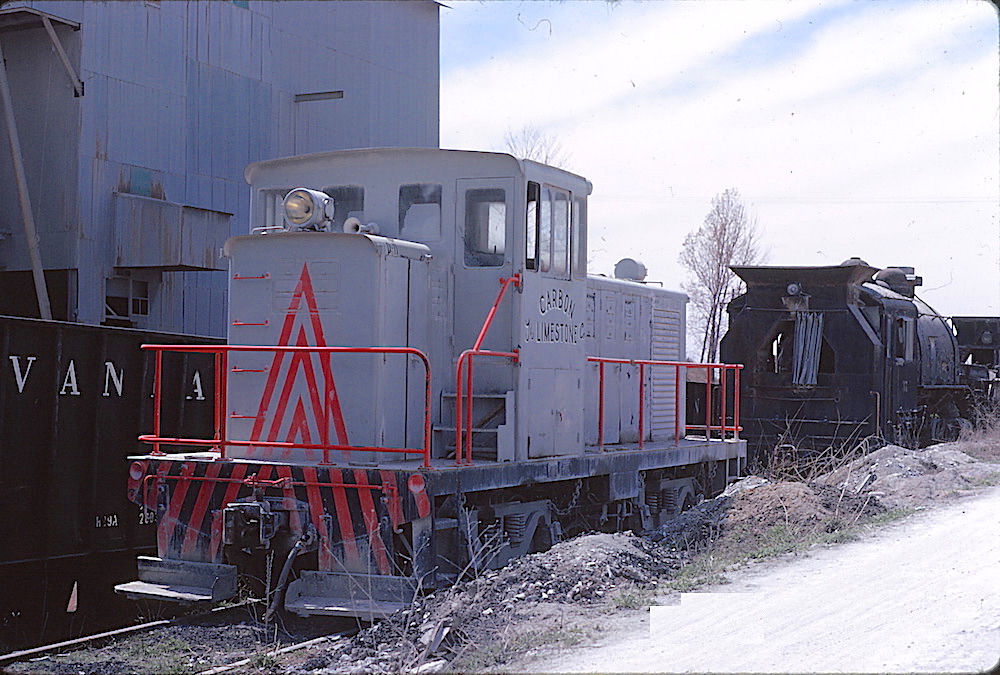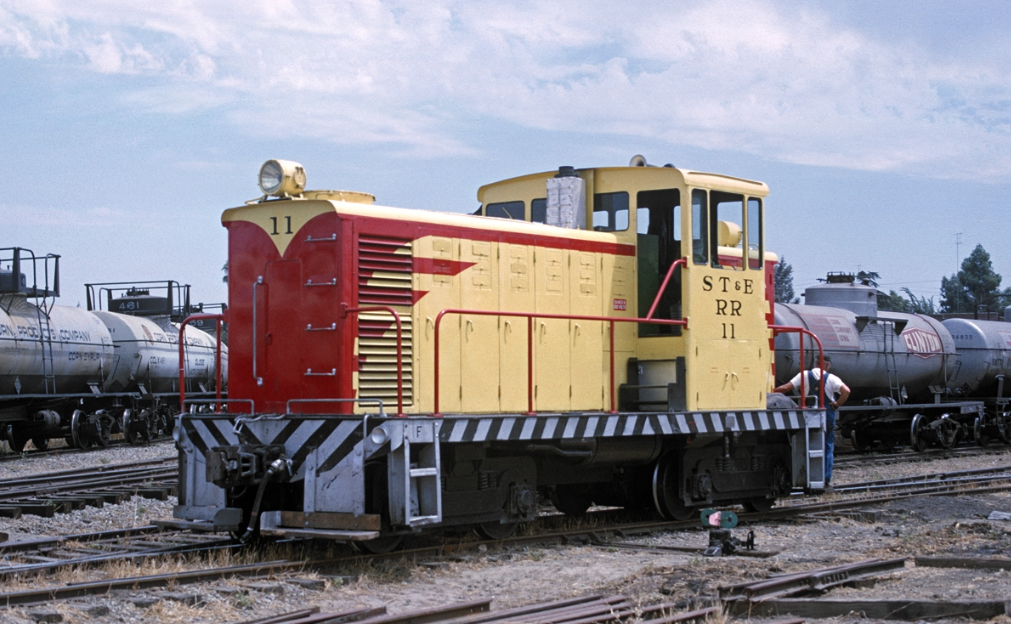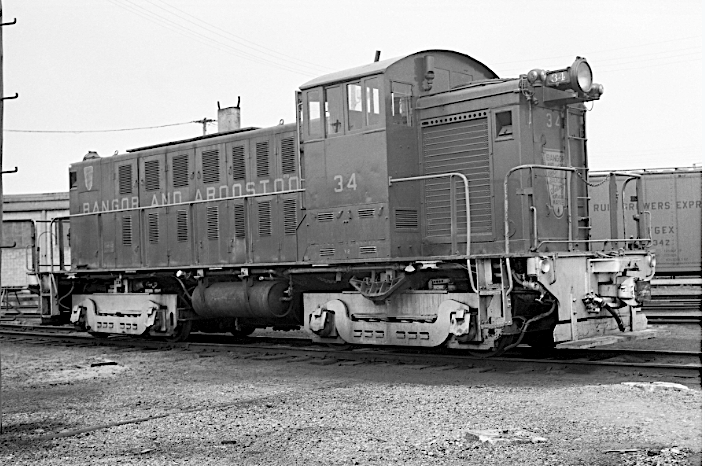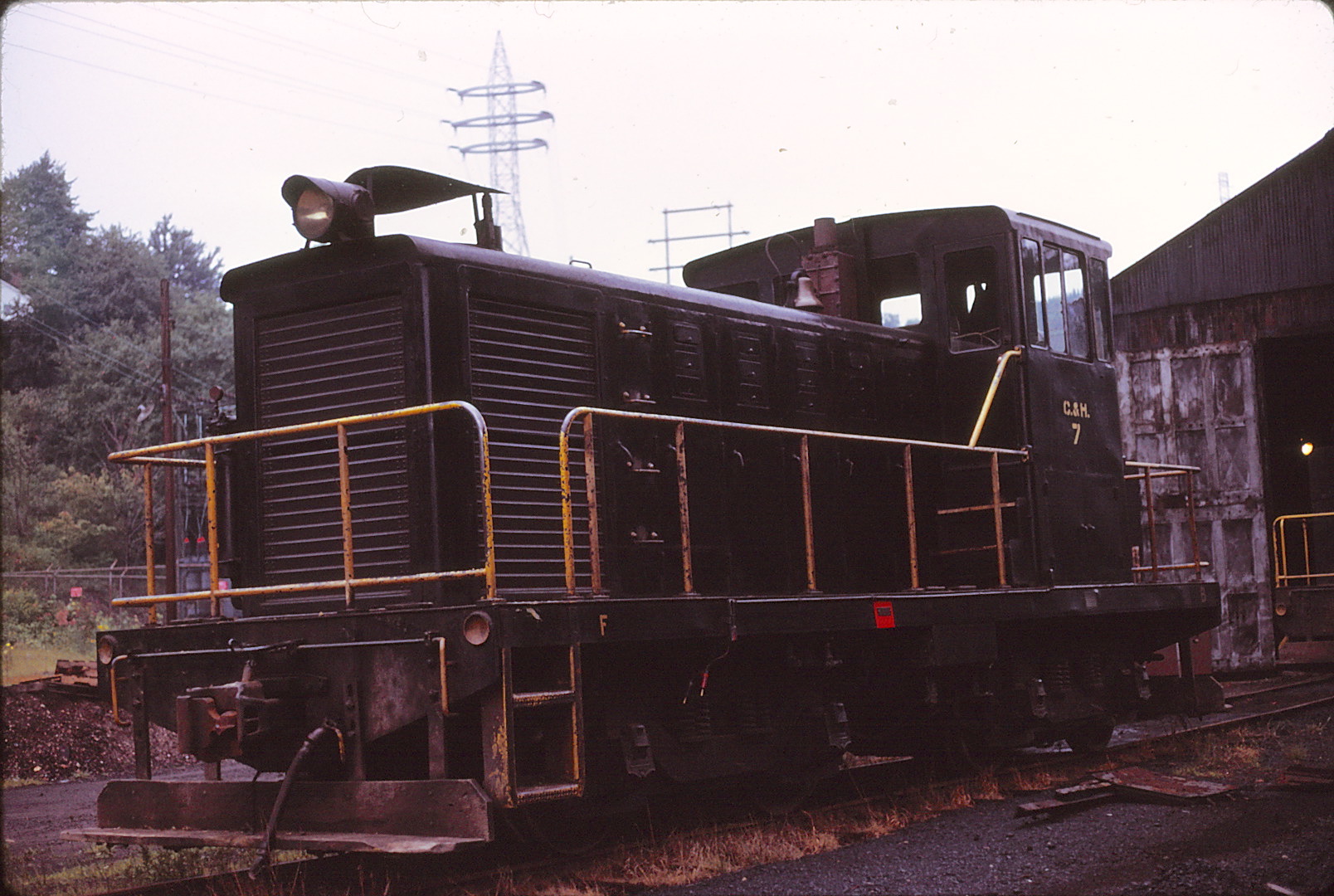GE's 45 & 60-Ton Off-Center Cabs |
|||
|---|---|---|---|
 Carbon Limestone at Poland Township, Ohio, on 20 April 1970 (R. Craig photo) |
|||
|
General Electric produced two types of off-center cab locomotives from 1937 to 1941: 45-ton and 60-ton. Although they were very similar in outward appearance, there were two significant features that differentiated them. Because they were driven by a single large engine (rather than two small engines used in center cab models), it was necessary to move the cab further back on the frame. It should be noted that 45-ton off-center cab loco did not employ side-rod trucks as found on the standard GE 45-tonner. Combined production of the two models stopped at 40 units, with the largest segment going directly to the U.S. Military in both 45 and 60-ton configurations.
| |||
| Pre-WWII Model | |||
 Stockton Terminal & Eastern Stockton, California (10 August 1972) Matt Herson photo
Cheswick & Harmar Harmarville, Pennsylvania (28 August 1971) Photographer unknown
| Spotting Features: 45-Tonner
Spotting Features: 60-Tonner
| ||
|
General Electric also produced a 100-ton Model "Y" that employed an off-center cab; it was reminiscent of an Alco RS1, but stubbier. Ten of the 660-hp locomotivs were built, all going to the New Haven railroad. (Five of the "Ys" were later sold to the Bangor & Aroostook.) They were easily discernable from other GE off-center cabs by their elongated car-body and shutterless long hoods; the radiator shutters were located on the short hood.
 Bangor & Aroostook GE/ IR DEY-2#34 Northern Maine Jct., Maine (18 April 1964) Photo courtesy of Ken Houghton of Houghton's Railimages |
|||
| |||
| Formatted by: R.Craig
New: 1 January 2020
|
|||
